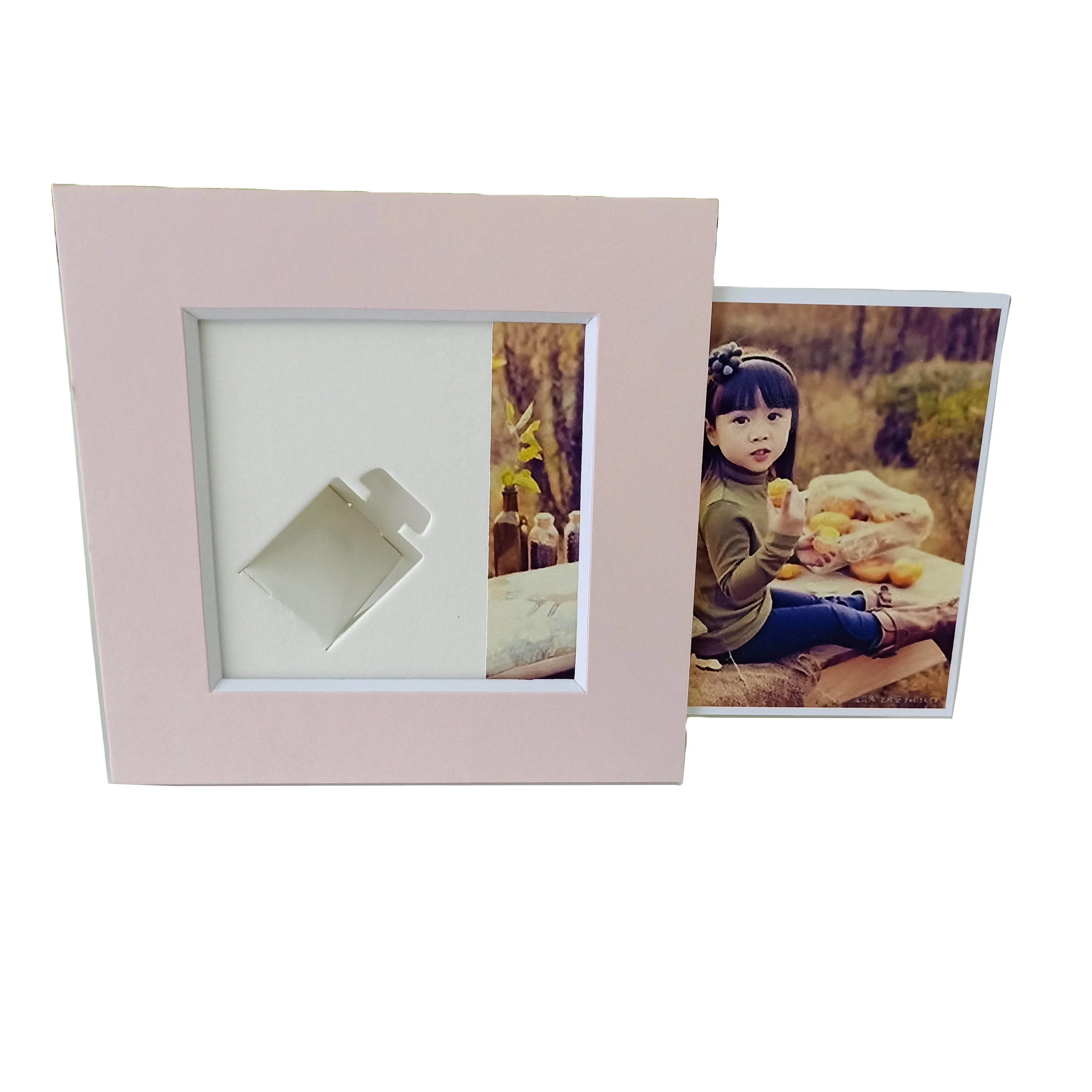Creating beautiful displays for your cherished memories has never been more accessible than with DIY paper photo frames. These versatile crafting solutions offer endless possibilities for personalizing your home decor while showcasing your favorite photographs in unique and creative ways. Whether you're a seasoned crafter or just beginning your creative journey, paper photo frames provide an affordable and customizable alternative to traditional framing options that can transform any space into a personalized gallery.

The growing popularity of handmade decorations reflects a broader trend toward sustainable crafting and personalized home styling. Paper frames offer exceptional flexibility in design, allowing crafters to experiment with various textures, colors, and embellishments without significant financial investment. From simple geometric designs to elaborate decorative patterns, these frames can complement any interior design aesthetic while providing a meaningful way to display precious moments and memories.
Essential Materials and Tools for Paper Frame Crafting
Choosing the Right Paper Types
Selecting appropriate paper materials forms the foundation of successful paper photo frame construction. Cardstock provides excellent structural integrity while remaining easy to cut and fold, making it ideal for beginners who want professional-looking results. Decorative scrapbooking papers offer beautiful patterns and textures that can eliminate the need for additional embellishments, while acid-free options ensure long-term preservation of both the frame and enclosed photographs.
Weight considerations play a crucial role in paper selection, as lighter papers may buckle under the weight of photographs, while overly thick materials can be challenging to manipulate during construction. Medium-weight cardstock typically provides the optimal balance between durability and workability. Additionally, consider the paper's surface finish, as matte surfaces accept adhesives more readily than glossy alternatives, ensuring stronger bonds during assembly.
Basic Crafting Tools and Supplies
Precision cutting tools are essential for creating clean, professional edges on your frames. A quality craft knife with replaceable blades ensures accurate cuts, while a metal ruler provides straight guidelines for consistent measurements. Self-healing cutting mats protect work surfaces while extending blade life and improving cutting accuracy. Bone folders create crisp, lasting creases in paper, which are particularly important for frames with folded construction elements.
Adhesive selection significantly impacts the final quality and longevity of paper frames. Double-sided tape provides clean, invisible bonds for most applications, while craft glue offers stronger adhesion for heavier elements. Photo-safe adhesives prevent chemical reactions that could damage photographs over time. Additional supplies like pencils for marking, erasers for cleanup, and small scissors for detail work complete the essential toolkit for successful frame crafting.
Popular Design Styles and Techniques
Minimalist Geometric Frames
Clean lines and simple shapes characterize minimalist paper photo frame designs that complement modern home decor styles. These frames typically feature geometric cutouts or layered paper elements that create visual interest without overwhelming the displayed photograph. Square and rectangular formats work particularly well for this style, with emphasis placed on precise measurements and clean construction techniques.
Color selection for minimalist frames often focuses on neutral tones like white, cream, or soft gray that won't compete with photograph content. However, single accent colors can add subtle personality while maintaining the overall clean aesthetic. The key to successful minimalist design lies in restraint and attention to detail, ensuring every element serves a specific visual purpose without unnecessary ornamentation.
Vintage and Ornate Decorative Styles
Ornate paper frames draw inspiration from classical decorative arts, incorporating intricate patterns, layered elements, and rich color palettes. These designs often feature multiple paper layers that create dimensional effects, with cut-out patterns resembling traditional woodwork or metalwork details. Distressing techniques using sandpaper or ink can add authentic aged appearances that enhance the vintage aesthetic.
Embellishment options for ornate frames include decorative punches that create consistent pattern elements, embossed details that add texture, and layered paper flowers or other dimensional elements. Color schemes typically incorporate warmer tones like deep reds, golden yellows, or rich browns that evoke historical periods. The challenge with ornate designs lies in maintaining balance between decorative elements and the frame's primary function of showcasing photographs.
Step-by-Step Construction Methods
Basic Flat Frame Assembly
Beginning with accurate measurements ensures professional results in flat frame construction. Start by determining the desired frame size, adding approximately one inch to each dimension to accommodate border width and photograph overlap. Cut the main frame piece from your chosen paper, then carefully measure and cut the interior window opening, leaving enough material around the edges to properly support the photograph.
Creating clean interior cuts requires careful planning and execution. Mark the cutting lines lightly with pencil, then use a sharp craft knife to make precise cuts from the frame's back side. This approach minimizes visible marks on the finished front surface. After cutting, test-fit your photograph to ensure proper sizing before proceeding with assembly steps. Sand any rough edges lightly to prevent snagging during handling.
Dimensional Frame Techniques
Layered construction adds visual depth and professional appearance to paper frames while providing additional structural support. Begin with a sturdy base layer cut to the final frame dimensions, then add decorative layers in progressively smaller sizes. Each layer can feature different colors, patterns, or textures that contribute to the overall design aesthetic while maintaining structural integrity.
Shadow box effects create impressive dimensional displays using multiple paper layers at varying heights. Spacers cut from thick cardboard or foam core separate layers and create depth, while strategic lighting can enhance these dimensional effects. This technique works particularly well for displaying special photographs or creating themed displays that tell visual stories through layered presentation.
Creative Embellishment Ideas
Natural and Organic Elements
Incorporating natural materials into paper photo frame designs creates unique textures and visual interest while maintaining eco-friendly crafting practices. Pressed flowers and leaves can be laminated between paper layers or adhered to frame surfaces for botanical themes. Small twigs, seeds, or dried grasses add three-dimensional elements that work particularly well with nature photography or outdoor-themed displays.
Texture papers made from natural fibers like hemp, bamboo, or recycled materials provide interesting surface variations that complement organic embellishments. These materials often feature subtle color variations and texture patterns that add visual depth without requiring additional decoration. Consider seasonal themes that incorporate appropriate natural elements, such as autumn leaves for fall photographs or pressed flowers for spring memories.
Mixed Media Integration
Combining paper with other crafting materials expands creative possibilities while maintaining focus on the paper frame foundation. Fabric strips can be woven through cut slots in paper frames, creating textile accents that soften angular designs. Ribbon borders add elegant finishing touches, particularly for wedding or celebration photographs, while metallic threads can create subtle shimmer effects.
Small decorative elements like buttons, beads, or miniature charms can serve as focal points or accent details when applied thoughtfully. The key to successful mixed media integration lies in maintaining proportion and ensuring all elements complement rather than compete with the displayed photograph. Consider the photograph's content and color palette when selecting complementary materials and embellishments.
Practical Applications and Display Ideas
Home Decor Integration
Paper photo frames offer exceptional versatility for home decorating projects, easily adapting to changing seasonal themes or room redesigns. Gallery wall arrangements benefit from consistent frame styles that unify diverse photographs while allowing individual images to maintain their unique character. Consider creating frame templates that ensure consistent sizing across multiple pieces for cohesive wall displays.
Room-specific adaptations allow frames to complement existing decor elements while serving functional display purposes. Kitchen frames might incorporate recipe cards alongside family photographs, while bedroom frames could feature romantic or peaceful imagery. Living room displays often work best with larger frames or grouped arrangements that create visual focal points without overwhelming the space.
Gift and Celebration Applications
Handmade paper frames make meaningful gifts that showcase both crafting skill and thoughtful personalization. Wedding frames can incorporate colors from the ceremony or reception, while baby frames might feature soft pastels and whimsical embellishments. Anniversary frames could include dates, locations, or other significant details that commemorate special relationships and milestones.
Holiday-themed frames provide opportunities for seasonal crafting projects that can be updated annually or collected over time. Valentine's Day frames might feature hearts and romantic colors, while Christmas frames could incorporate traditional holiday motifs. These seasonal projects often become cherished family traditions that create lasting memories beyond the photographs they display.
Maintenance and Preservation Tips
Protecting Paper Frames from Damage
Proper storage and handling techniques significantly extend the lifespan of paper photo frames while maintaining their appearance quality. Avoid exposing frames to direct sunlight for extended periods, as UV radiation can fade colors and weaken paper fibers over time. Consider using UV-protective glass or acrylic covers for valuable photographs or frames displayed in bright locations.
Humidity control prevents paper warping and adhesive failure that can compromise frame integrity. Store unused frames in cool, dry locations with consistent temperature and humidity levels. When cleaning frames, use dry methods like soft brushes or compressed air rather than moisture-based cleaners that could damage paper surfaces or loosen adhesive bonds.
Long-Term Preservation Strategies
Acid-free materials throughout the construction process ensure long-term preservation of both frames and photographs. This includes using acid-free papers, adhesives, and backing materials that won't release harmful chemicals over time. Document construction methods and materials used for each frame, as this information can be valuable for future repairs or restoration efforts.
Regular inspection schedules help identify potential problems before they cause significant damage. Check for loose adhesive bonds, color fading, or structural weakness that might require attention. Simple preventive measures like rotating displayed frames away from direct light sources or adjusting humidity levels can prevent many common deterioration issues while preserving your crafting investments.
FAQ
What type of paper works best for making photo frames
Medium-weight cardstock provides the ideal balance between structural integrity and workability for most paper photo frame projects. Look for acid-free options with weights between 65-80 pounds that offer sufficient durability without being too thick to cut cleanly. Decorative scrapbooking papers work well for ornate designs, while plain cardstock allows for custom decoration and embellishment.
How can I make paper frames more durable
Increase durability by using multiple paper layers, high-quality adhesives, and protective finishing techniques. Consider laminating completed frames or applying clear protective coatings that resist moisture and handling damage. Adding backing boards cut from thick cardboard or foam core provides additional structural support, particularly for larger frames or those holding heavier photographs.
Can paper photo frames hold standard sized photographs safely
Well-constructed paper frames can safely hold standard photograph sizes when designed with appropriate support structures. Ensure interior dimensions provide adequate support around photograph edges, and consider using photo corners or mounting tabs that distribute weight evenly. For larger photographs, include backing support and avoid hanging frames in high-traffic areas where they might be bumped or jostled.
What tools do I absolutely need to start making paper frames
Essential tools include a sharp craft knife, metal ruler, self-healing cutting mat, and bone folder for creating clean creases. Quality scissors, pencil for marking, and appropriate adhesives complete the basic toolkit. While specialized tools can improve results, these basics allow creation of professional-looking frames with proper technique and attention to detail.

